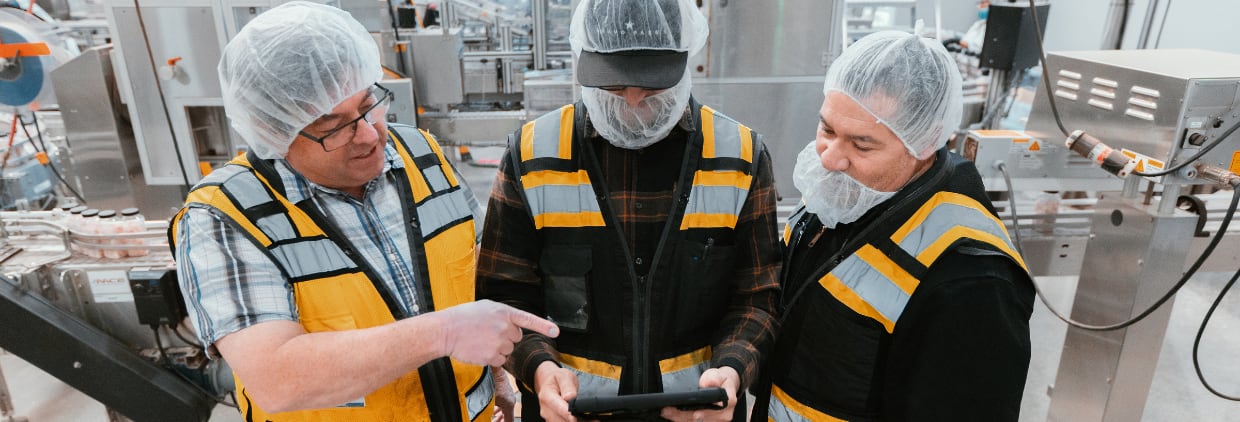Collectively, manufacturers spend billions of dollars on technology, consulting, and training to streamline production and supply chain processes.¹
For nutraceutical companies, these investments aim to improve processes across operations, quality, and maintenance – and in turn, reduce cost, sell more goods, and increase market competitiveness.
Although effective, these disciplines can be labor-intense and require years of focused effort to unlock opportunities. But nutraceutical companies need a solution to reduce unnecessary costs. Manufacturers without strong process design and control experience unnecessary waste, costing companies up to 25% of annual sales due to packaging waste, incorrect labelling, and giveaway.²
Continuous Improvement (CI) programs are key for manufacturers looking to optimize processes. Optimized processes both reduce input costs and improve quality. These programs can unlock significant savings and new revenue, from driving equipment uptime and production throughput, to improving product quality and reducing returns.
To be effective, CI programs should be inclusive to all team members (leadership, management, and frontline workers), support interdepartmental problem-solving, align with corporate initiatives, and provide measurable financial results. It should ensure processes are streamlined and scalable to support growth and can be easily implemented with rapid time to value, regardless of the facility size.
Yet, despite high expectations and significant investments, 70% of CI programs and 90% of digital transformation initiatives fail.³ These failures often stem from setting unrealistic goals, poor planning, or inadequate process support. Workers may also feel programs are pushed on them with no choice or voice in how they are implemented.
How can factories improve CI processes?
Twelve years ago, Redzone introduced a new approach to improving efficiencies on the factory floor: the Redzone Connected Workforce Solution. The approach focuses on connecting the entire manufacturing workforce to improve daily outcomes in production, quality, and maintenance, with real-time data, AI, and a collaboration platform enhancing efforts.
The Redzone Biennial Benchmark Report analyzes productivity and performance data from numerous factories to identify key trends and best practices in manufacturing, with its most recent report, 2025 Productivity Benchmark Report, analyzing the impact of CI on the productivity of factories that had completed the 90-day Redzone coaching program.
This is Redzone’s sixth biennial benchmark report and includes its largest data set of manufacturers, including data from 1,500 factories. These factories generated more than 50,000,000 production runs and encompassed 491,000 daily Redzone users.
Redzone used Overall Equipment Effectiveness (OEE) to measure manufacturing productivity and gain insights on how to systematically improve the whole manufacturing process. Other performance indicators included: units per hour (UPH); units per labor hour (UPLH); cycle time; takt time; and product giveaway.
Improved OEE – with proven results
The report showed that on average, factories deploying Redzone’s coaching program documented a 26.4% increase in productivity with an average starting OEE of 47.4% and average ending OEE of 59.9% – highlighting a significant increase in productivity.
Within its consumer base, Life Sciences saw an average productivity increase of 33.3% within 90 days, Vytalogy Wellness saw a 30% increase in production output and Best Formulations had a 35% productivity increase.
Each factory was categorized into four groups, allowing customers to be analyzed based on their starting OEE and CI Maturity:
Group 1 Included the lowest baseline / early-stage CI. Results showed the greatest level of OEE uplift in this group, starting at a baseline OEE of 37.4% and increasing by 36.4%. Results show how factories who are at a relatively low starting point in CI journeys can experience sizable gains in 90 days by applying the Redzone approach.
Group 2 Included higher-than-average baselines / early-stage CI. These factories started at a baseline of 60.7%, and increased by 18.9% in productivity. The results demonstrated that by refocusing CI efforts on the right priorities, frontline teams can improve losses and increase agility.
Group 3 Included the lowest baseline / mature CI. Starting at a baseline OEE of 44.1%, these factories saw an productivity increase of 28.2%. With strong CI culture already in place, Redzone supercharged CI programs to eliminate the admin work required to identify OEE losses and leverage real-time data and communication to tackle losses proactively.
Group 4 Included the highest baseline / mature CI. While these factories already had the best CI cultures in place, starting at a baseline of 72.6%, they still saw an average uplift of 8.3% in productivity.
A comprehensive and mature CI culture
Results from the Redzone Biennial Benchmark Report highlight how effective, efficient CI programs can transform factory productivity. Redzone enables successful CI transitions by making CI accessible and integrating programs into existing workflows.
This is made possible by Redzone’s purpose-built platform and coached-in deployments. Redzone enables plants to quickly develop their own comprehensive and mature CI programs, aligning company processes and goals across all functional roles and levels of responsibility, driving sustainable change. Each factory team whose work is simplified and aligned to the overall picture can bring additional opportunities for success, leading to greater efficiency and financial savings.
These CI solutions give the frontline teams the ability to visualize, centralize, and prioritize daily activities and problem-solving actions.
Find out more here to unlock the power of frontline teams and streamline success.
References
- Redzone. 2025 Productivity Benchmark Report Sixth Biennial Edition.
- ASQ. Cost Of Quality: Finance For Continuous Improvement.
- Dr. Corrie Block, PhD, DBA. 12 Reasons Your Digital Transformation Will Fail. Forbes. 2022.


